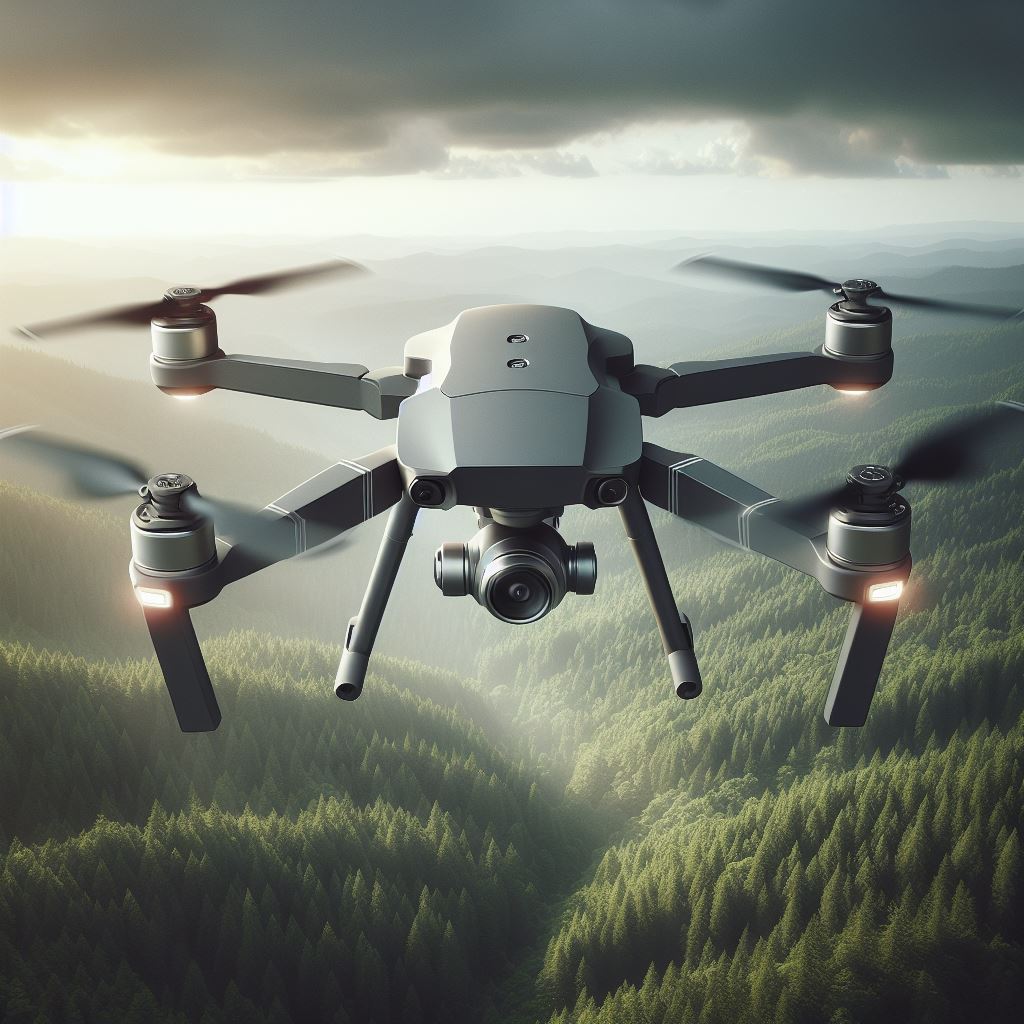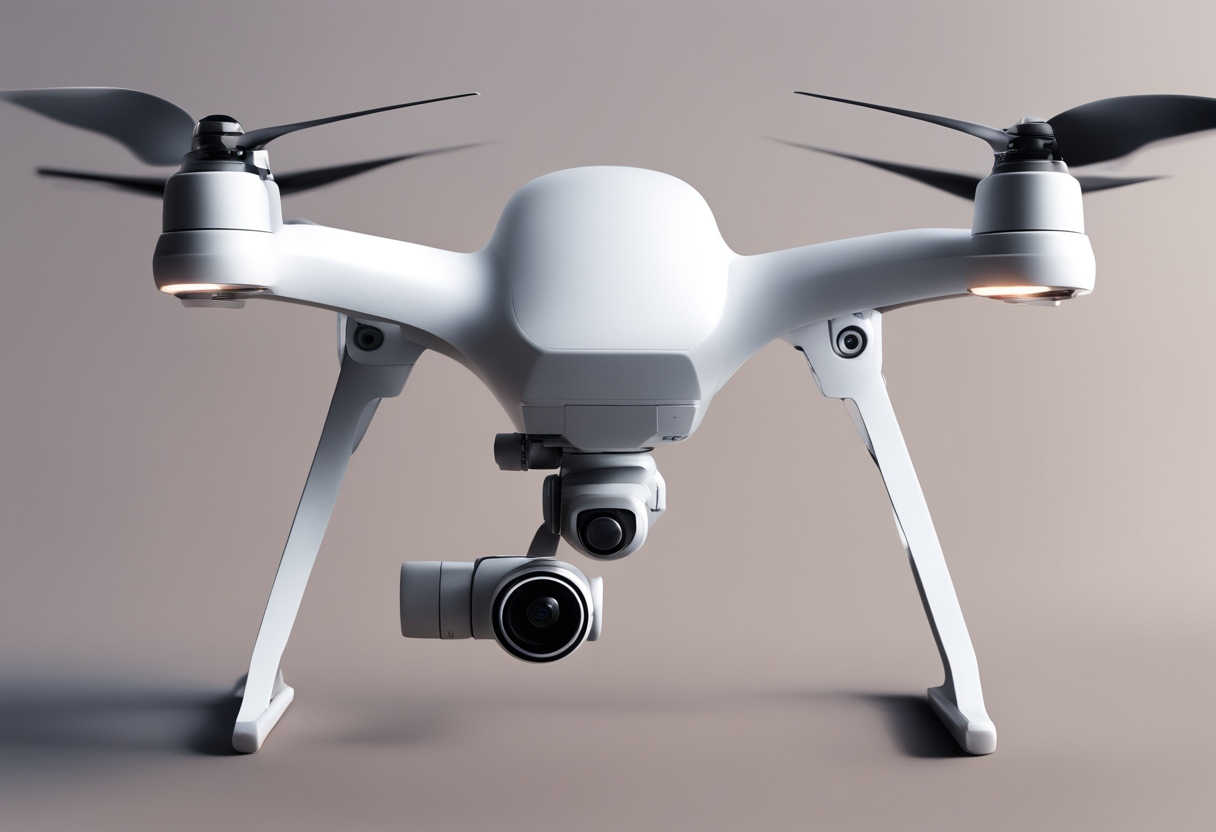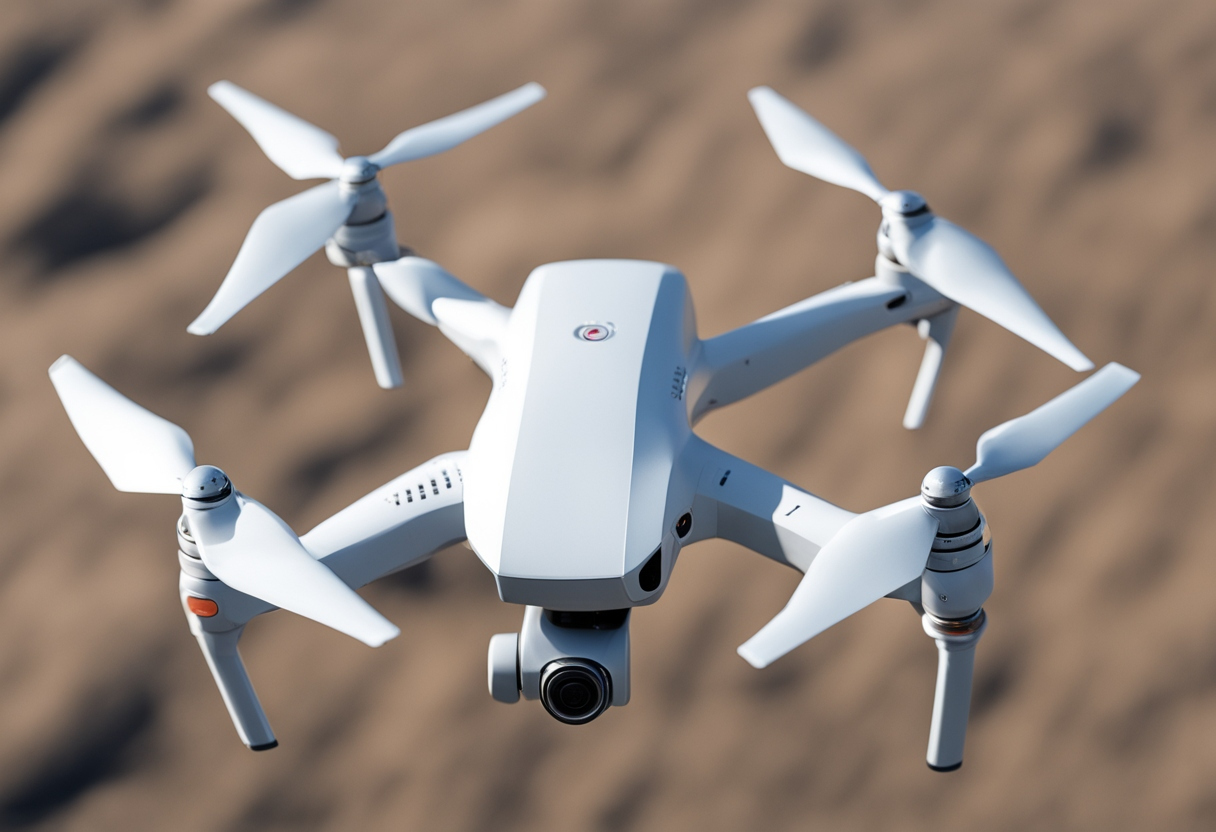The Role of MLCC in Drone

Multilayer Ceramic Capacitors (MLCCs) play a crucial role in the electronics of drones, contributing significantly to their performance and functionality. These tiny components store and release electrical energy quickly, providing the necessary power for various aspects of drone operation.
One of the primary functions of MLCCs in drones is to filter out noise and ensure smooth power delivery to sensitive components like the flight controller, sensors, and communication systems. They help maintain stable voltage levels, reducing the risk of electrical interference and ensuring reliable operation.
MLCCs are also used for decoupling, which involves isolating different parts of the circuit to prevent noise or interference from affecting other components. This is crucial in drones, where precise control and communication are essential for safe and efficient operation.
Additionally, MLCCs are known for their high capacitance values relative to their size, making them ideal for applications where space is limited, such as in compact drone designs. Their small size and light weight contribute to the overall efficiency of drones, allowing them to be agile and maneuverable.

MLCC Requirements for Drone Applications
Drone applications impose specific requirements on Multilayer Ceramic Capacitors (MLCCs) due to the unique operating conditions and performance demands of these aerial vehicles. Here are some key considerations for MLCC selection in drone applications:
Temperature Range: Drones often operate in wide temperature ranges, from extreme cold to high heat. MLCCs used in drones must be able to function reliably across these temperature ranges to ensure consistent performance.
Vibration and Shock Resistance: Drones are subjected to significant vibration and shock during operation, especially in high-speed or turbulent conditions. MLCCs should be chosen for their ability to withstand these mechanical stresses.
Size and Weight: Space and weight are critical factors in drone design. MLCCs with high capacitance values in small packages are preferred to minimize the overall size and weight of the drone.
Capacitance Stability: MLCCs should maintain their capacitance values over time and under different environmental conditions. This stability is crucial for the proper functioning of drone electronics.
Voltage Rating: MLCCs used in drones must have voltage ratings that meet or exceed the maximum voltage requirements of the drone’s electrical system to prevent voltage breakdown and failure.
Frequency Response: Drones often operate at high frequencies, especially in communication and control systems. MLCCs with high frequency response characteristics are essential for these applications.
Reliability and Longevity: Drones are typically used in demanding environments and are expected to have long operational lifespans. MLCCs with high reliability ratings and long lifespans are preferred for drone applications.
Availability and Supply Chain Considerations: Ensuring a stable supply of MLCCs is essential for drone manufacturers. Considerations such as lead times, availability of alternative sources, and risk mitigation strategies should be part of the MLCC selection process.
By carefully considering these factors, drone manufacturers can select MLCCs that meet the specific requirements of their applications, ensuring reliable and efficient operation of their aerial vehicles.
MLCC Reliability in Drone Environments
The reliability of Multilayer Ceramic Capacitors (MLCCs) is crucial in drone environments, where these components are exposed to a variety of challenging conditions. MLCCs must withstand vibration, shock, temperature fluctuations, and other factors while maintaining their performance and functionality.
One key aspect of MLCC reliability is their ability to operate within specified temperature ranges. Drones often encounter extreme temperatures, from freezing cold at high altitudes to intense heat during operation. MLCCs must be able to function reliably across these temperature ranges to ensure the drone’s electronics operate correctly.
Vibration and shock resistance are also critical factors. Drones experience significant vibration and shock during flight, especially in turbulent conditions or when performing high-speed maneuvers. MLCCs used in drones must be designed to withstand these mechanical stresses to prevent failure.
Furthermore, MLCCs must maintain their capacitance values over time and under various environmental conditions. Changes in capacitance can affect the performance of the drone’s electronics, leading to malfunctions or failures. MLCCs with stable capacitance characteristics are essential for reliable drone operation.
MLCCs vs. Other Capacitor Types in Drones
Multilayer Ceramic Capacitors (MLCCs) are widely used in drones, but they are not the only type of capacitor available. Other capacitor types are also used in drone electronics, each with its own advantages and disadvantages compared to MLCCs. Here is a comparison of MLCCs with other capacitor types commonly used in drones:
Tantalum Capacitors: Tantalum capacitors are known for their high capacitance density and stable performance over a wide temperature range. However, they are more expensive than MLCCs and can be less reliable in high vibration environments, making them less suitable for some drone applications.
Aluminum Electrolytic Capacitors: Aluminum electrolytic capacitors are cost-effective and have high capacitance values, but they are larger and heavier than MLCCs. They also have higher ESR (Equivalent Series Resistance) and are less suitable for high-frequency applications, which are common in drones.
Film Capacitors: Film capacitors are known for their high reliability and low ESR, making them suitable for high-frequency applications. However, they are larger and have lower capacitance values compared to MLCCs, which can limit their use in compact drone designs.
Supercapacitors: Supercapacitors are used in drones for energy storage and quick energy release applications. They have high power density and long cycle life but lower energy density compared to batteries. They are often used in conjunction with MLCCs to provide the required power for drone operations.

MLCC Trends in Drone Technology
Multilayer Ceramic Capacitors (MLCCs) play a crucial role in the evolution of drone technology, and several trends are shaping their usage in this field. Here are some key trends:
Miniaturization: The trend towards smaller and lighter drones has driven the demand for smaller MLCCs with higher capacitance values. Manufacturers are developing compact MLCCs to meet the size and weight constraints of modern drones.
High-Frequency Applications: Drones increasingly use high-frequency communication and control systems. MLCCs with high-frequency characteristics are essential for these applications, driving the demand for MLCCs with improved high-frequency performance.
Reliability Improvements: Drones operate in harsh environments and are subjected to vibration, shock, and temperature variations. MLCC manufacturers are focusing on improving the reliability and durability of their products to ensure consistent performance in these conditions.
Temperature Stability: MLCCs must maintain their capacitance values across a wide temperature range. Manufacturers are developing MLCCs with enhanced temperature stability to meet the requirements of drone applications.
Supply Chain Resilience: The global MLCC market has experienced supply chain challenges in recent years. Drone manufacturers are looking for reliable MLCC suppliers and exploring alternative capacitor technologies to mitigate supply chain risks.
Customization: Some drone manufacturers require MLCCs with specific characteristics tailored to their unique requirements. MLCC manufacturers are offering customization options to meet these demands.
Environmental Considerations: As drones become more prevalent, there is a growing focus on environmental sustainability. MLCC manufacturers are developing eco-friendly materials and production processes to reduce the environmental impact of their products.
These trends indicate a dynamic landscape for MLCCs in drone technology, with ongoing advancements driving innovation and performance improvements in both drones and MLCCs.
